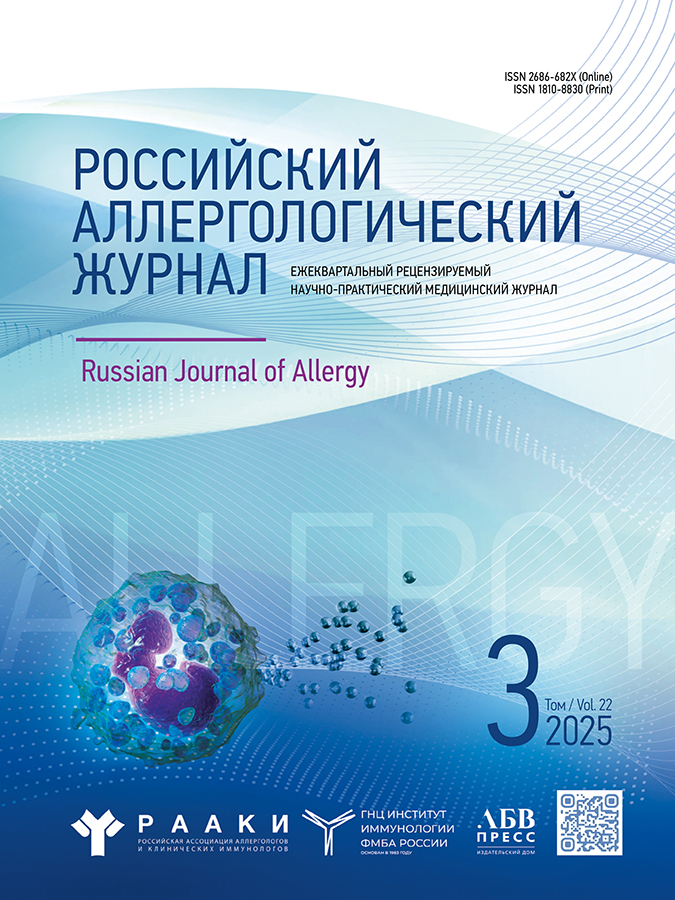Структура немедленных реакций гиперчувствительности на лекарственные средства в периоперационном периоде: клиническая характеристика, диагностика и оценка рисков
- Авторы: Жукова ДГ1, Феденко ЕС2, Юдин АА1,3, Рахимова ОЮ1
-
Учреждения:
- ФГБУЗ центральная клиническая больница российской академии наук
- ФГБУ ГНЦ «Институт иммунологии» ФМБА Госсии
- ГБОУ ВПО РНИМУ им. Н.И. Пирогова
- Выпуск: Том 11, № 6 (2014)
- Страницы: 9-19
- Раздел: Статьи
- Дата подачи: 10.03.2020
- Дата публикации: 15.12.2014
- URL: https://rusalljournal.ru/raj/article/view/486
- DOI: https://doi.org/10.36691/RJA486
- ID: 486
Цитировать
Полный текст
Аннотация
Полный текст
Об авторах
Д Г Жукова
ФГБУЗ центральная клиническая больница российской академии наук
Email: zulyaevan@mail.ru
Е С Феденко
ФГБУ ГНЦ «Институт иммунологии» ФМБА Госсии
А А Юдин
ФГБУЗ центральная клиническая больница российской академии наук; ГБОУ ВПО РНИМУ им. Н.И. Пирогова
О Ю Рахимова
ФГБУЗ центральная клиническая больница российской академии наук
Список литературы
- Kroigaard M., Garvey L.H., Gillberg L. et al. Scandinavian Clinical Practice Guidelines on the diagnosis, management and follow-up of anaphylaxis during anaesthesia. Acta Anaesthesiol. Scand. 2007, v. 51, p. 655-670.
- Mertes P.M., Malinovsky J.M., Jouffroy L. et al. Reducing the risk of anaphylaxis during anesthesia: 2011 updated guidelines for clinical practice. J. Investig. Allergol. Clin. Immunol. 2011, v. 21, p. 442-453.
- Lobera T., Audicana M.T., Pozo M.D. et al. Study of hypersensitivity reactions and anaphylaxis during anesthesia in Spain. J. Investig. Allergol. Clin. Immunol. 2008, v. 18, p. 350-356.
- Axon A.D. Anaphylaxis and anesthesia - all clear now? British Journal of Anaesthesia. 2004, v. 93, p. 501-504.
- Simons F.E., Ardusso L.R., Bilo M.B. et al. World allergy organization guidelines for the assessment and management of anaphylaxis. World Allergy Organ. J. 2011, v. 4, p. 13-37.
- Федеральные клинические рекомендации по аллергологии. Под. ред. Р.М. Хаитова, Н.И. Ильиной. М., «Фармарус Принт Медиа». 2014, 126 с.
- Ebo D.G., Fisher M.M., Hagendorens M.M. et al. Anaphylaxis during anaesthesia: diagnostic approach. Allergy. 2007, v. 62, p. 471-487.
- Ильина Н.И., Латышева Т.В., Мясникова Т.Н. и соавт. Лекарственная аллергия. Методические рекомендации для врачей. Под ред. Р.М. Хаитова. М., «Фармарус Принт Медиа». 2012, 75 с.
- Schatz M. Adverse reactions to local anesthetics. Immunol. All. Clin. N. Am. 1992, v. 12, 585 p.
- Gollapudi R.R., Teirstein P.S., Stevenson D.D., Simon R.A. Aspirin sensitivity: implications for patients with coronary artery disease. JAMA. 2004, v. 292, p. 3017.
- Messaad D., Sahla H., Benahmed S. et al. Drug Provocation tests in patients with a history suggesting an immediate drug hypersensitivity reaction. Ann. Inter. Med. 2004, v. 140, p. 1001-1006.
- Chaudhry T., Hissaria P., Wiese M. et al. Oral drug challenges in non-steroidal anti-inflammatory drug-induced urticaria, angioedema and anaphylaxis. Intern. Med. J. 2012, v. 42, p. 665-671.
- Solensky R., Khan D.A. Drug Allergy: An Updated Practice Parameter. Joint Task Force on Practice Parameters, the American Academy of Allergy, Asthma and Immunology. Ann. Allergy Asthma Immunol. 2010, v. 105, p. 273.
- Aberer W., Bircher A., Romano A. et al. Drug provocation testing in the diagnosis of drug hypersensitivity reactions: general considerations. Allergy. 2003, v. 58, p. 854.
- Turjanmaa K., Alenius H., MäkinenKiljunen S. et al. Natural rubber allergy. J. Allergy Clin. Immunol. 1995, v. 93, p. 259-268.
- Федеральный закон № 3 от 8 января 1998 (в ред. от 25.11.2013 N 317-ФЗ, с изм., внесенными от 04.06.2014 N 145-ФЗ) «О наркотических средствах и психотропных веществах». http://base.consultant.ru/cons/cgi/online. cgi?base=LAW&n=154942&req=doc.
- Жукова Д.Г., Феденко Е.С., Юдин А.А., Цывкина Е.А. Оценка риска реакций гиперчувствительности к лекарственным средствам в периоперационном периоде с помощью специализированного опросника. Рос. Аллергол. Журн. 2014, № 4, с. 18-25.
Дополнительные файлы



